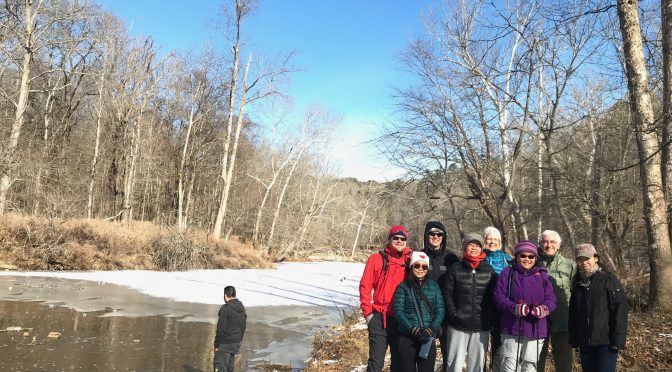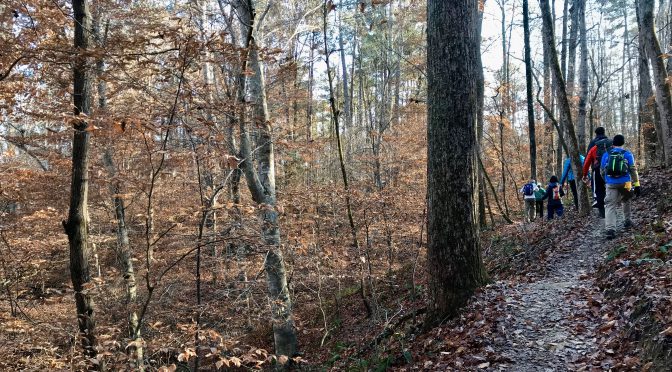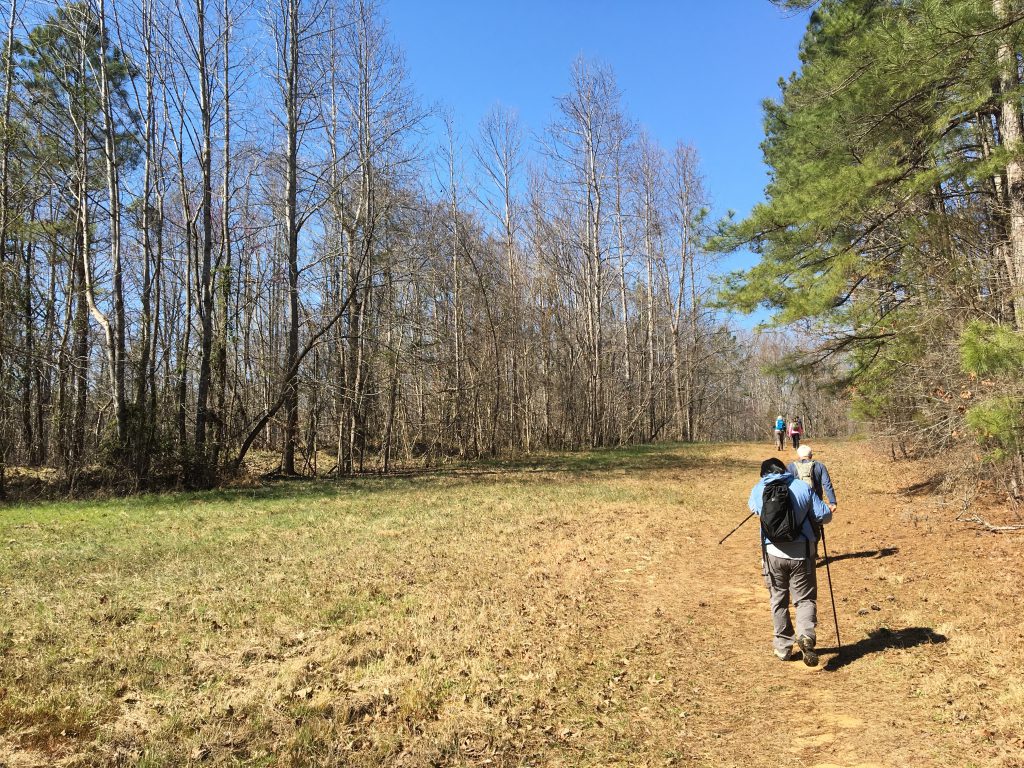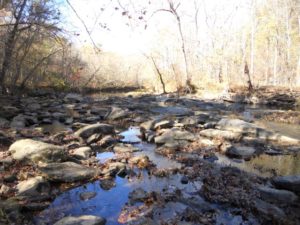A clear, crisp sky. Cold, invigorating air. Perfect weather for a hike. Especially for first-timers eager for a good first impression. Sunday afternoon’s weather couldn’t have been better.
Unfortunately.
* * *
I first heard of the prospect of snow from an unlikely source on Ninth Street in Durham. It was wrapped in a solicitation that seemed more far-fetched than usual. Not impossible for early March, but unlikely based on the unseasonably warm winter we’d been having. Two days later I received a text from my wife: it was a screen shot of the 7-day forecast. “Look at Sunday!” she implored. She never uses exclamation points. Sure enough, Sunday was pictographically represented by a snowflake.
As a hike leader and organizer, that set into motion my Unpleasant Weather Preparedness Plan. For the next three days, I would check the forecast first thing in the morning, at mid-afternoon, in the evening. Every time, the forecast was different. Each time, it came with the disclaimer that different forecasting models suggested different scenarios: maybe snow, maybe rain, maybe sleet.
Maybe … nothing.
* * *
For the most park, I love the unpredictability of the weather. I love having to consider the various eventualities and preparing accordingly. Packing rain gear on even the sunniest summer day in the mountains, estimating the proper fleece for a winter hike. Gloves? Hat? Gaiters? Gearing up for the journey is part of the journey itself. When it comes to hiking, about the only thing that will give me pause is an electrical storm. Years ago I was caught in an electrical storm above 12,000 feet on Engineer Pass in southwestern Colorado’s San Juan Mountains: we could actually see lightening emanate from clouds below us. Never again.
Otherwise, there’s nothing like being properly geared for a little weather — when I’m on my own. When I’m leading others, and responsible for their safety, it’s another matter. Not everyone has the proper gear for different weather occasions. Not everyone has a tolerance for getting a little wet. Not everyone would just about always be outside instead of in.
The latter is one of my main goals leading hikes, to make people want to return outside, often, and to different locales. To make that happen, though, they need to first feel comfortable. Sunday’s hike was the first in an eight-week spring series that included a lot of first-timers. More to the point, it included a lot of families: the kids have a good time, the family will be back. If they’re wet and cold, it’s six more weeks (at least) of the Xbox.
So I monitored the weather closely Wednesday, Thursday, Friday. Friday, before all my weekend hikes, I always send a reminder notice with an update on the forecast. If the weather looks iffy, I advise that they will receive word at least three hours in advance if the hike is canceled.
For Sunday’s hike, though, I deviated from standard procedure. The forecast was leaning away from accumulations of snow; worse, though, it was teetering toward icy, wet rain. Even if the trail was OK, the roads getting there might not be. So, because it was the first hike of the session (and first impressions are crucial, remember), because there were so many newbies, and because the hike was in the Triangle’s northern snow belt (Horton Grove Nature Preserve in northern Durham County), I pulled the plug early. To the hikers, I wrote, “we’re going to postpone the start of the Spring Sunday Afternoon Hiking Season until Sunday, March 19. We’ll still start at Horton Grove; we’ll move the schedule back a week … .”
* * *
Two hikers responded immediately: “Good call,” they wrote. I check the forecast late Friday afternoon: it was looking colder and wetter. I felt good about call. Until Saturday morning.
“So much for the winter weather,” a hiker on another hike I was leading said when I arrived.
Pardon?
Overnight, what wet winter weather that had been expected now wouldn’t be expected until Monday — if at all. Sunday morning arrived with the lightest of light snow, the perfect forest accent for a winter hike. By 10:30, the sun was peeking out; by noon the sky was more blue than not. By 1:30, hike time, the sky was crisp, clear, the air cold and invigorating.
Perfect weather for a hike. A hike, say, for first-timers eager for a good first impression. Yup, Sunday afternoon’s weather couldn’t have been better.
Unfortunately.




